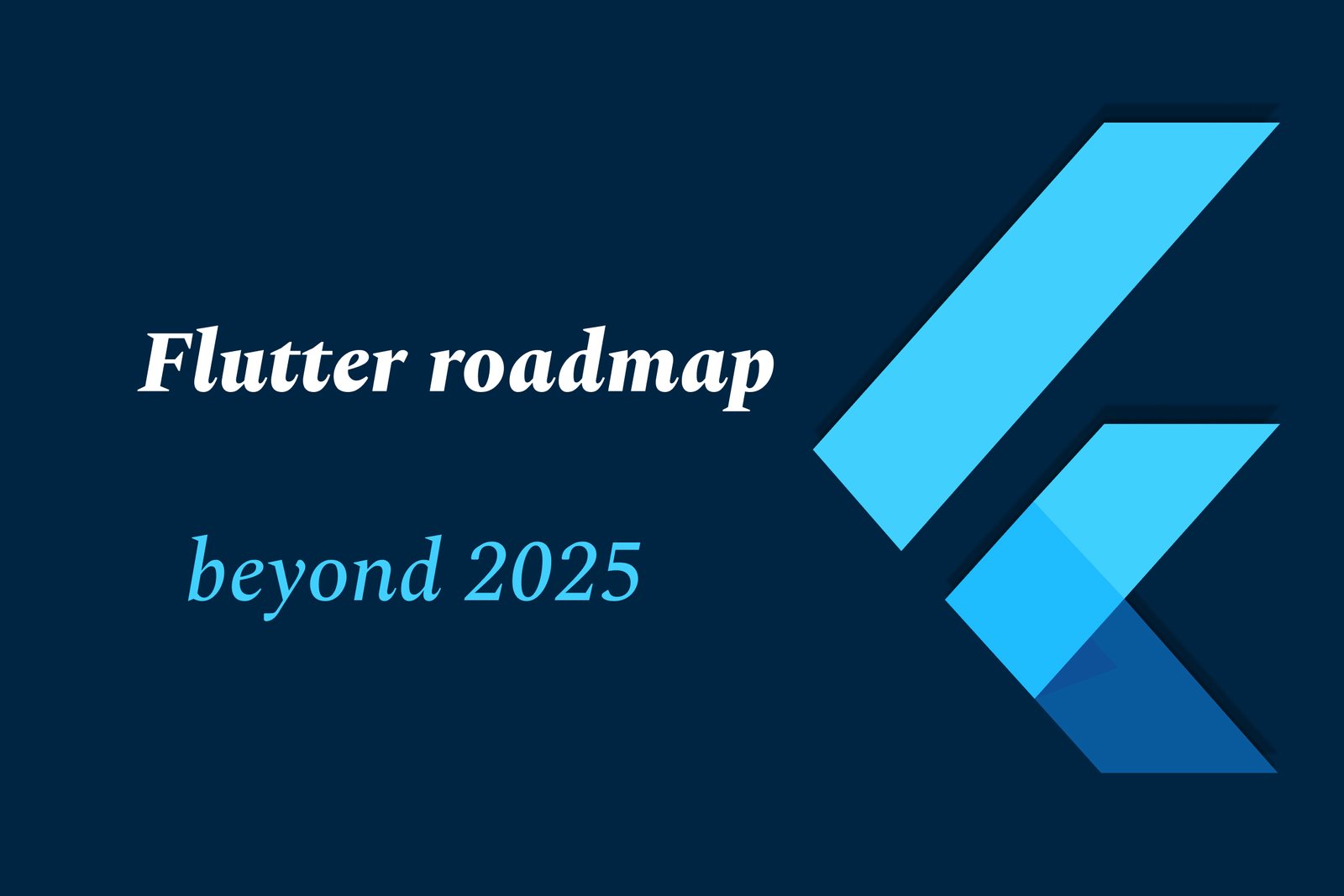Flutter Roadmap Beyond 2025
The Flutter roadmap beyond 2025 focuses on enhanced cross-platform performance, advanced desktop and web support, smarter developer tools, AI integration, and modern programming features—empowering developers to build faster, scalable, and more accessible apps seamlessly across all devices.
Flutter roadmap beyond 2025
1 ) Cross Platform Performance Enhancements
Flutter 4.0 focuses on improved native integrations for seamless platform communication using Kotlin, Swift, etc.
Optimizations to the Skia rendering engine for faster frame rates and smoother animations across devices.
Modular architecture aiming for smaller app sizes on mobile, web, and desktop platforms.
2 ) Advanced Desktop Support
Deeper platform specific API integrations on macOS (better accessibility), Linux (Wayland support), and Windows (WinUI and Fluent design).
Inclusion of native UI components like menus, system trays, context menus, and draggable windows.
Improved keyboard and pointer input systems for responsive, enterprise level desktop applications.
3 ) Web Performance Improvements
Faster initial load times, critical for Progressive Web Apps (PWAs).
Enhanced rendering pipeline via CanvasKit and DOM modes to deliver smoother graphics heavy experiences.
New responsive layout tools such as MediaQuery and LayoutBuilder for adaptive, native like UIs across devices.
4 ) Developer Tooling Upgrades
Smarter debugging tools targeting performance bottlenecks like memory leaks and inefficient widget rebuilds.
Further refinements to Hot Reload and Hot Restart to enhance speed and reliability in development.
Integration of performance profiling with CI/CD and cloud monitoring for robust diagnostic workflows.
5 ) Enhanced Multi platform Capabilities
Native windowing and plugin stabilization for macOS, Windows, and Linux improving desktop app reliability.
HTML renderer upgrades for web with CSS interop and optimized input scaling on desktops.
GPU accelerated embeddable views enabling integration of Flutter rendered layers into native UIs with Vulkan support and zero copy textures.
6 ) Modernized Programming Model
Adoption of structured concurrency via Dart’s asyncScope to simplify task management and predictable error handling.
Introduction of the @memoize annotation for compile time caching of pure widget constructors, reducing UI rebuilds and increasing app efficiency.
7 ) AI and Accessibility Integration
AI tooling integrated into daily workflows, enabling smarter apps with machine learning APIs, GPT powered bots, voice recognition, and personalized recommendations.
Expansion of accessibility features beyond mobile to web, enhancing inclusivity and user experience across platforms.
8 ) Architectural Trends and Industry Adoption
Growing adoption of monorepo and modular architectures in Flutter projects to enhance code sharing, collaboration, scalable design, and streamlined deployment.
Flutter increasingly the default choice for startups and enterprises to rapidly build MVPs, deliver superior user experience, and scale globally with a single codebase.
This roadmap emphasizes Flutter's ongoing commitment to superior performance, developer experience, and cross platform versatility, cementing its position as a future proof framework beyond 2025.
https://justacademy.in/news-detail/why-flutter-developers-are-in-high-demand-in-india
https://justacademy.in/news-detail/best-flutter-practices-every-developer-should-follow
https://justacademy.in/news-detail/what’s-deprecated-in-flutter-2025
https://justacademy.in/news-detail/new-features-in-flutter-4.0-stable
Related Posts
In 2025, top Angular libraries offer modern, feature-rich components and tools for building dynamic web apps. From powerful data grids to low-code platforms like UI Bakery, these libraries enhance development speed, UI design, and scalability, making them essential for Angular developers.
Migrating from AngularJS to Angular 17 involves gradually upgrading your app by running both frameworks together using tools like ngUpgrade, rewriting components in TypeScript, and adopting Angular’s modern architecture to enhance performance, maintainability, and long-term support.
Angular state management tools help organize and handle app data efficiently, improving scalability and maintainability. Popular options include NgRx for robust, RxJS-based patterns, and newer Signal Store solutions that offer simpler, reactive approaches integrated tightly with Angular’s latest features.
RxJS in Angular empowers developers to manage asynchronous data streams with powerful operators like `forkJoin`, `combineLatest`, and `zip`. Mastering these key operators in 2025 is essential for building efficient, reactive applications that handle complex event sequences seamlessly.
Angular performance optimization in 2025 focuses on improving app speed and responsiveness by using techniques like OnPush change detection, lazy loading, efficient data caching, and AOT compilation. These practices reduce load times, enhance user experience, and ensure scalable, fast Angular applications.
In 2025, Angular remains preferred for large-scale, enterprise apps with its robust, all-in-one framework, while Vue attracts developers seeking simplicity and fast development for smaller projects. Both frameworks excel, with choice driven by project needs and team expertise.
Angular Signals are a new reactive primitive in Angular 16 that enable fine-grained, efficient change detection by automatically tracking dependencies and updating only affected parts of the UI. They simplify state management and boost app performance, revolutionizing Angular's reactivity model.
Angular interview questions to prepare in 2025 focus on core concepts like components, directives, data binding, routing, and dependency injection, along with TypeScript mastery and latest Angular features to ensure strong practical knowledge for building scalable, efficient web applications.
AngularJS reached its official end of support in January 2022, meaning no further updates or security patches. To ensure app security and performance, developers should consider migrating to modern Angular versions or seek third-party long-term support options if immediate migration isn’t possible.
The Angular Roadmap 2025 highlights upcoming features focused on improving developer experience and performance, including zoneless Angular, Signals integration, enhanced Forms, async data handling, improved HMR, and expanded Angular Material/CDK enhancements, driving modern, efficient web app development.










